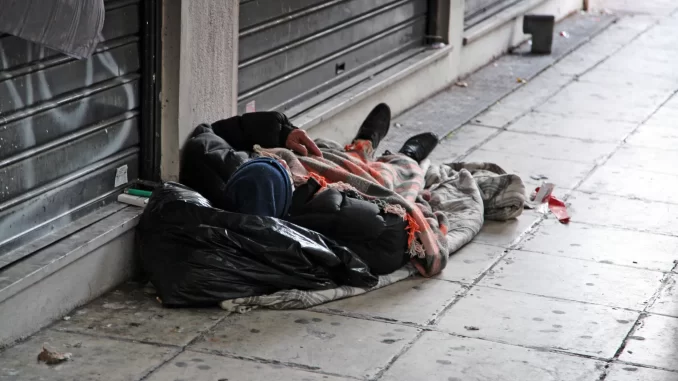
By Hank Russell
A recent report from New York State Comptroller Tom DiNapoli’s office found that homelessness in New York State and Long Island have greatly increased.
According to the report, between January 2023 and January 2024, homelessness in New York State jumped 53.1% — more than four times the rate in the rest of the nation. Only three other states (Hawaii, Illinois and Massachusetts) experienced greater increases in the last year.
Between 2022 and 2024, homelessness more than doubled in New York – while growing by 20.7% throughout the rest of the nation.
In New York last year, there were 158,019 homeless. That number makes up approximately 20% of the 771,480 across the nation experiencing homelessness. That rate — 1 in 5 of the nation’s homeless is in New York — is up from last year, when the rate was 1 in 7. That same year, the state’s homeless rate was approximately 1 in 8 — meaning 12.5% of the state’s population is undomiciled. That is third in the nation behind Hawaii and the District of Columbia.
A driver of the increases in New York between 2022 and 2024, the report said, has been a near tripling of the number of homeless people in families, which grew from 34,805 in 2022 to 95,457 in 2024. Homeless people in families now constitute 60.4% of the overall homeless. DiNapoli expressed concern that 32.1% of New York’s homeless are under the age of 18, one of the highest shares in the nation. The number of homeless children has more than doubled between 2022 (20,299) and 2024 (50,773)
In 2004, there were 4,002 people on Long Island living without a home, according to New York State Continuum of Care. That is up 32% since 2022. Further, over that two-year span, the number of homeless under the age of 18 increased 20% and the number of people in families who are homeless rose 24%.
The main driver for the increase in homelessness during this time was the influx of asylum seekers, according to the report. According to the Office of the State Comptroller, between the spring of 2022 and December 8, 2024, New York City reported more than 225,700 asylum seekers had come through its intake system. Although most of them were in New York City, other regions throughout the state continued to experience homelessness.
Housing was another factor. While some of those were able to own a home or rent, they struggled financially. Based on data from the U.S. Department of Housing and Urban Development, between 2016 and 2020, Long Island was the most cost-burdened region in the state, with 32.8% of owners and 51.4% of renters facing financial hardship. (Cost-burdened means having 30% to 49.9% of income going to housing costs. Extremely cost-burdened means having 50% or more of one’s income going to housing costs.)
Some of the factors include lack of housing production, rising housing costs and poor housing conditions; this can be overcrowding or lack of complete plumbing or kitchen facilities. (Long Island was third in the latter category.)
Evictions played another role in homelessness. According to the New York State Unified Court System, there were 191,230 eviction filings in 2024, down from 215,962 the year before and 193,288 in 2022, when the eviction moratorium was lifted.
DiNapoli said more needs to be done to keep people in their homes and provide housing assistance, particularly to families with children. The state should carefully monitor and enhance reporting on the effectiveness of current programs and determine where additional resources may be needed, particularly for expanding rental assistance, and continue funding legal representation for low-income households facing eviction.
“New York has long had a housing affordability crisis, and more families are running out of options and ending up on the street or in shelters,” DiNapoli said. “Many of the tens of thousands of asylum seekers that came to New York had no place to stay and drove up spending and a large portion of the growth of the homeless population. But let’s be clear, this isn’t just a New York City problem, it is impacting communities all over the state. New York needs to examine how it’s using current housing resources while taking more action to address this urgent situation.”

